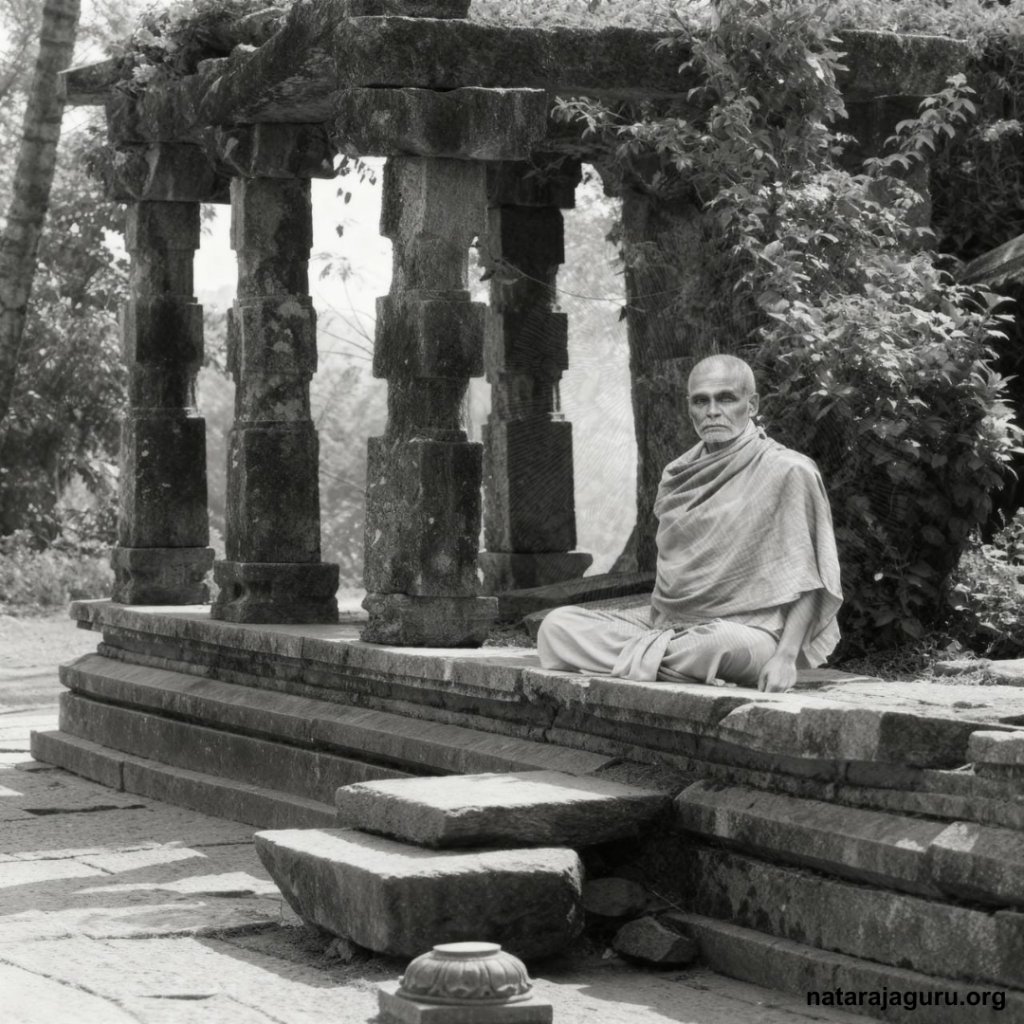
Sivagiri is a sacred hill located in Varkala, Kerala, closely associated with the life and teachings of Narayana Guru. Known for its serene atmosphere and spiritual depth, Sivagiri attracts thousands of devotees every year. The site is home to the Guru’s samadhi (tomb) and the famous Sarada Mutt. Beyond being a pilgrimage destination, Sivagiri represents the Guru’s vision of a progressive, inclusive society. Visitors experience not just devotion but also reflection on values such as education, social reform, and unity. Today, Sivagiri continues to inspire people from all walks of life, making it both a spiritual center and a hub of cultural significance.
In 1904, Narayana Guru chose Sivagiri Hill for meditation and simple living. He loved nature and planted trees and flowering plants around his hermitage. At first, the hill was quiet and unnoticed, but as people came to know about the Guru’s presence, it soon became a place of attraction. An elementary school and night school were also started to educate children and illiterate adults, especially from marginalized communities. People began visiting Sivagiri regularly to have darshan of the Guru and seek guidance. These early years established Sivagiri as a space of service, learning, and spiritual practice, setting the foundation for what it later became.
In April 1912, Narayana Guru consecrated the idol of Goddess Saraswati at Sivagiri. He called it Sarada Mutt, a temple of wisdom rather than ritual. The goddess is seated on a white lotus, symbolizing knowledge blossoming in purity. Unlike traditional temples, there was no offering of food, oil, or ghee. Devotees worship through hymns and prayers, focusing on knowledge rather than rituals. The temple’s architecture is simple and octagonal, designed with ventilation and light, setting a new example in temple construction. For the Guru, Sarada Mutt was not only a place of worship but also a symbol of enlightenment and progress.
Narayana Guru redefined the meaning of temples through Sarada Mutt. Instead of focusing on rituals and costly practices, he emphasized simplicity, purity, and social usefulness. He discouraged spending large amounts on fireworks and festivals. Temples, according to him, should include space for discourses, schools for children, and vocational training centers. Donations should be used to uplift the poor and educate society, not wasted on pomp. He also introduced hygienic standards such as bathrooms instead of ponds for bathing. His temple vision was radical and ahead of its time, aiming to make temples centers of knowledge, social progress, and spiritual growth.
The idea of the Sivagiri pilgrimage was proposed in 1928 by Vallabhasseri Govindan Vaidyar and T.K. Kittan Writer. When they shared it with Narayana Guru, he approved it under strict guidelines. The pilgrimage would be held at the beginning of the New Year, after 10 days of self-purification. Pilgrims were asked to wear simple yellow clothes, dyed with turmeric, symbolizing purity and simplicity. The first pilgrimage started from Elavumthitta village with five young men walking to Sivagiri, chanting hymns. Despite being mocked as “yellow birds,” they remained devoted to their mission. This first step grew into today’s annual Sivagiri Theerthadanam.
Guru emphasized that pilgrims must observe ten days of preparation before the Sivagiri pilgrimage. This preparation involved practicing five purities (Pancha Dharma) inspired by the teachings of Buddha: purity of body, purity of food, purity of mind, purity of word, and purity of deed. By cultivating these values, the pilgrimage was transformed into a journey of inner cleansing rather than just an external ritual. For Narayana Guru, spirituality was inseparable from personal discipline and ethical living. The five purities continue to guide pilgrims even today, giving the Sivagiri pilgrimage a unique moral and spiritual foundation.
When asked about the goals of the Sivagiri pilgrimage, Narayana Guru listed them on his fingers: education, cleanliness, devotion to God, organization, agriculture, trade, handicrafts, and technical training. These goals reflected his progressive vision of social upliftment. The pilgrimage was never meant to be a display of rituals but a living practice of social reform. Each pilgrim was expected to embody these values in daily life. By integrating personal discipline with social responsibility, the Sivagiri pilgrimage became not only a spiritual journey but also a roadmap for building a better society.
Guru instructed that pilgrims should wear simple yellow garments, symbolizing purity, simplicity, and the renunciation of ego. Importantly, he discouraged people from buying expensive new clothes. Instead, an old white garment dipped in turmeric water was sufficient. The yellow attire connected the pilgrimage to the robes of the Buddha, representing humility and discipline. This also discouraged social inequality, since everyone dressed the same regardless of wealth. The practice of wearing yellow clothes remains a powerful symbol of the Sivagiri pilgrimage, reminding devotees that spirituality is about simplicity, equality, and inner purity.
Sivagiri is not just a religious site; it is also a cultural center. Every year during the pilgrimage, there are processions, seminars, public meetings, and cultural programs. Topics such as women’s empowerment, education, and social reform are discussed, keeping alive the Guru’s vision of progress. Group weddings and community feasts reflect his ideas of equality and brotherhood. For many, visiting Sivagiri is both a spiritual and cultural experience, where devotion is expressed through art, debate, and social action. This unique blending of culture and spirituality makes Sivagiri stand apart from conventional pilgrimage centers.
Two major events are celebrated every year at Sivagiri: Guru Jayanthi in August (his birthday) and Guru Samadhi Day in September (his passing). These days are marked by colorful processions, spiritual discourses, and cultural programs. During the pilgrimage season in December–January, thousands of devotees dressed in yellow gather at Sivagiri. The atmosphere is filled with hymns, prayers, and social discussions. These festivals are not just about rituals but about reviving the Guru’s message of unity, education, and social service. They attract people from across Kerala and beyond, turning Sivagiri into a hub of devotion and dialogue.










